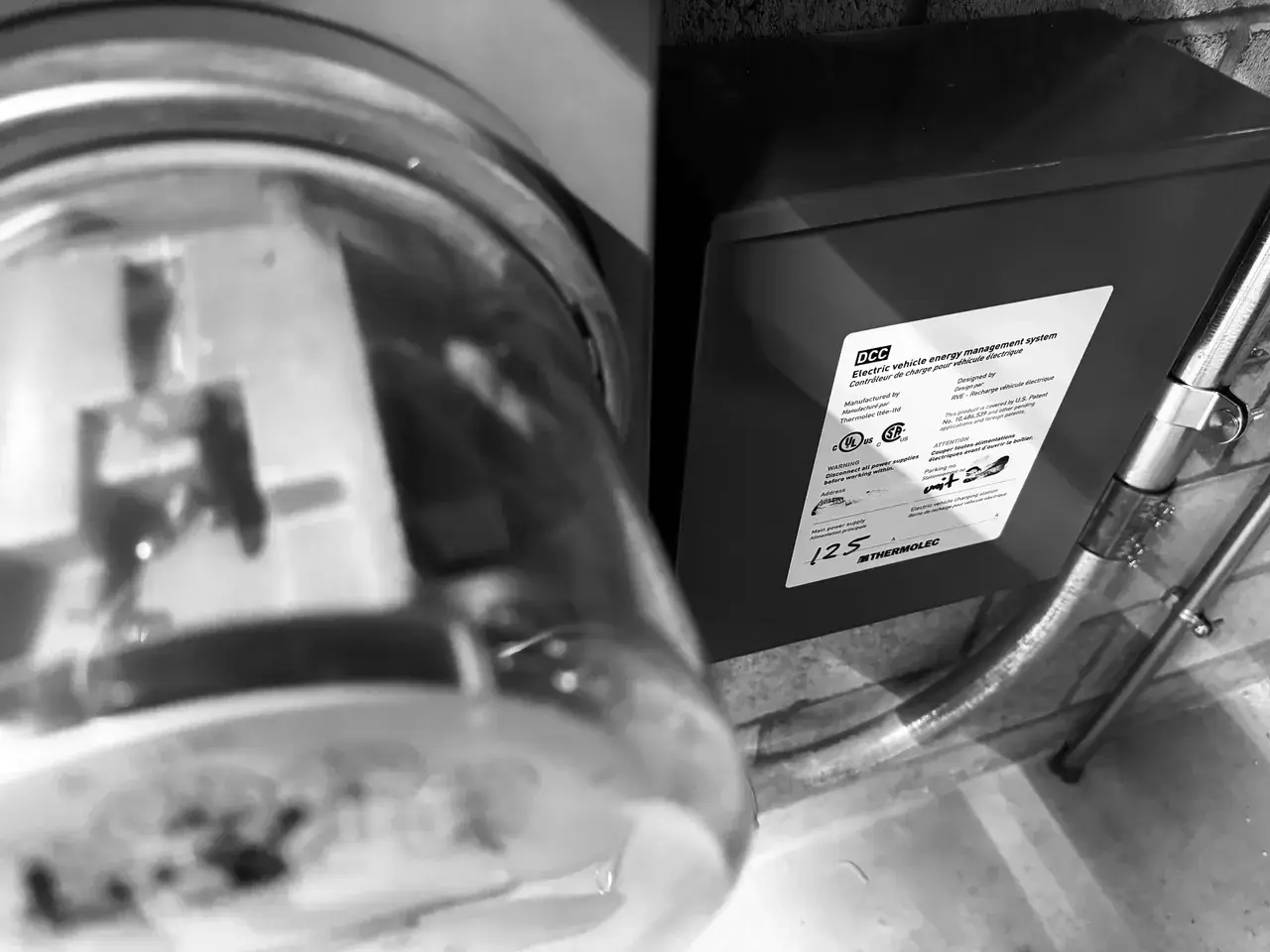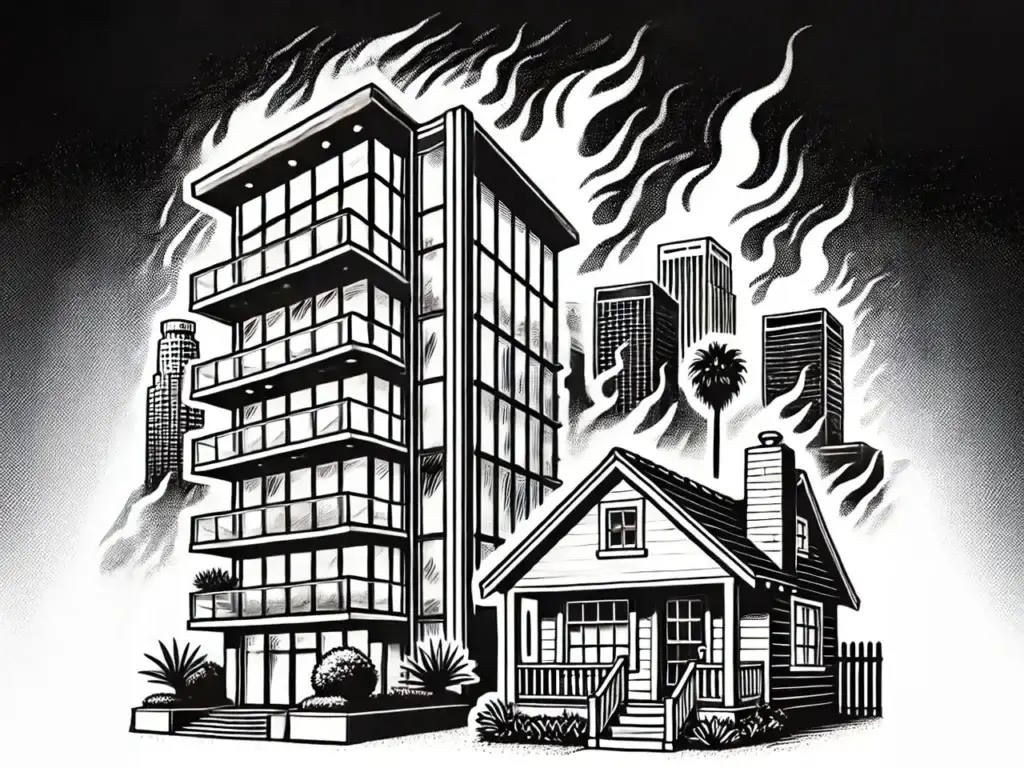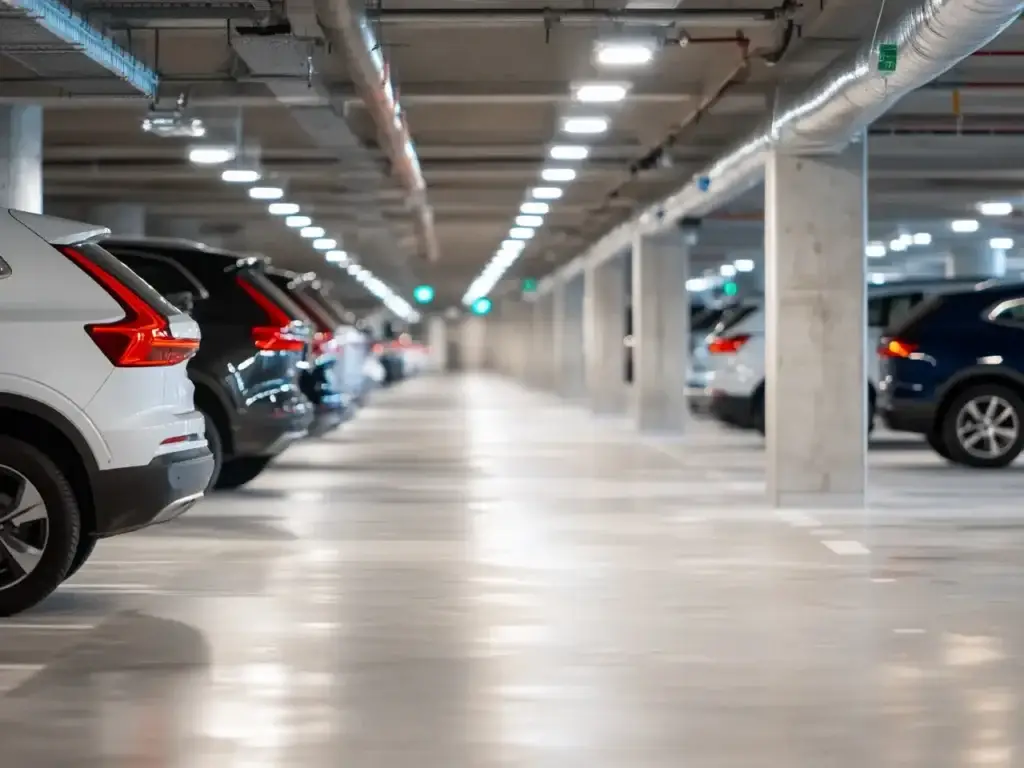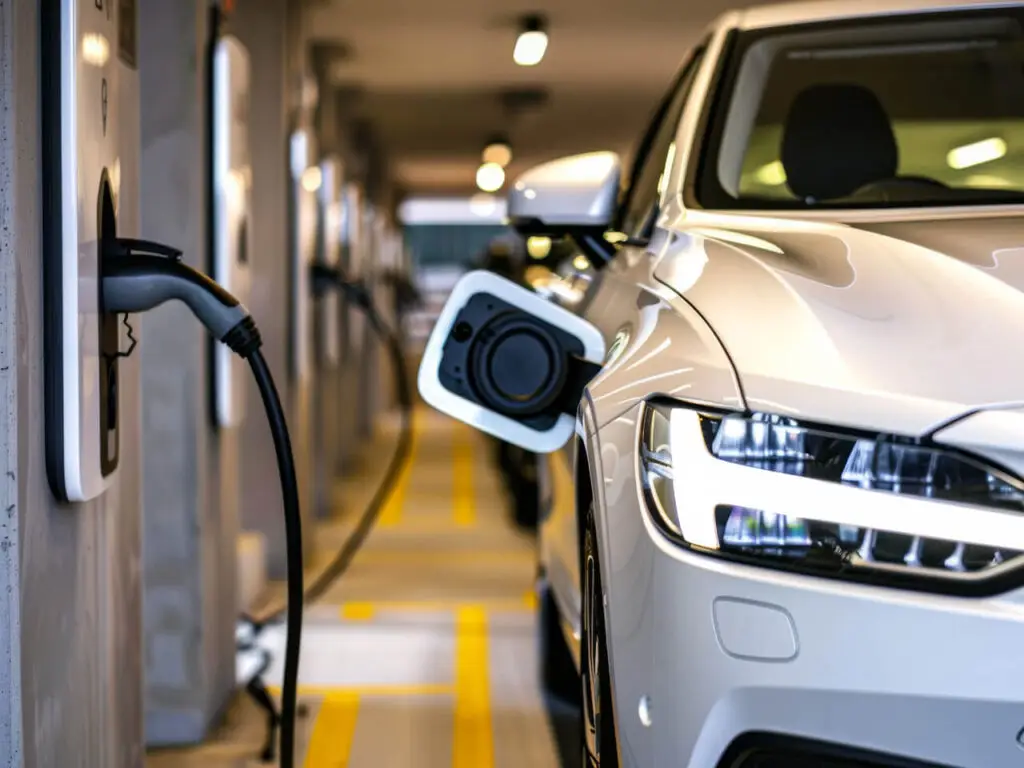Smoke poured out of the electric room and into the stairwell on a Friday night in April of 2023. More than a dozen Los Angeles firefighters were inside the building, opening up the hatch on the stairwell to let out the smoke, inspecting the building. A giant ladder connected the fire truck on the street to the building’s roof.
Before the firefighters left, the chief said the electrical panel where the fire had started was in unstable condition. We needed to get an electrician that night.
Few electrical companies do business after hours. Our on-call manager found a semi-retired electrician who rode in on his motorcycle, his tools in the saddle bags.
There was no mystery as to the source of the fire. The area underneath the meter for one of the units was charred.
The new owner of that unit had hired an electrician to install an electric vehicle (EV) charger. The installation wasn’t to code and flunked inspection but the owner used it anyway. Later, we discovered the EV circuit was 50 amps, despite an explicit agreement limiting it to 40 amps.
And now the unit owner was demanding that his electrician be allowed to re-install his charger, immediately.
Taking Control
The board needed to exercise control over our building’s electrical system.
According to our documents, everything in the electrical room, including unit meters, is HOA responsibility.
We changed the lock for the electric room, making it impossible for anyone to install, or re-install, a charger without permission. (The firemen had seemed surprised that every owner had a key to the electric room—the same one that opened the front door of the building.)
We enacted a new policy allowing only an HOA-approved electrician to install EV chargers or do other work in the electric room. We needed to make sure that any electrician who installs an EV charger is well-qualified to do so. We also wanted the electrician to be looking out for the building, so that installations preserve capacity for future installations rather than compete for the last available wall space.
We checked all existing chargers in the building against Los Angeles Department of Building and Safety (LADBS) records to make sure they had been properly permitted. In addition to the one implicated in the fire, we found two long-standing chargers that had not been permitted and that were not done to code. I will abashedly admit here that one of them, installed eight years previously, was mine. The other owner and I agreed to stop using the chargers until they could be reinstalled.
And we imposed a moratorium on installing or re-installing any chargers while we started an open-ended investigation to find out how to safely install EV chargers in our building.
Reviewing Our Buildings
Our condominium, built in 1986, is a square three-story donut on top of an underground garage with two side-by-side parking spaces for each of the 26 units plus a generous number of guest spaces. The electric room is on the entry level of the garage next to one of the building’s two stairwells.
The room has two panels supplying the units: a 400-amp panel supplying 11 units, and a 600-amp panel supplying the other 15 units. Wall space in the electric room was quickly running out as owners connected EV chargers to their unit meters using separate circuit boxes and large elbows.
The separate panel which supplies all the condominium common areas—the “house panel”—has 1000 amps. Potentially, there was some spare capacity there if we decided to pull power from our house panel rather than having everyone tap into their own unit meter.
Complying With The Law
California Civil Code 4745 requires HOAs to allow homeowners to install EV chargers with only “reasonable restrictions,” defined as restrictions that “do not significantly increase the cost of the station or significantly decrease its efficiency or specified performance.” Applications must be approved within 60 days unless the HOA makes a reasonable request for additional information. Failure to comply could make the HOA liable for damages and a penalty of $1,000.
Designed to encourage the adoption of electric vehicles, the law doesn’t appear to give HOAs the right to deny an application that meets the basic requirements of the statute; it says the HOA shall approve the installation if the owner agrees in writing to comply with the HOA’s “architectural standards,” engage a licensed electrician, provide insurance and pay for the costs of installation and electricity usage.
Can an HOA prohibit EV charging because the building doesn’t have the electrical capacity? It doesn’t appear so. Like all technology-forward legislation, California Civil Code 4745 pushes a goal and forces everyone else to figure it out.
Before the fire, we had felt pressured by the law to approve applications. The fire, however, changed our perspective. Now we decided that we needed to take some time out to figure out how to add chargers safely.
Looking for Answers
The internet doesn’t offer much to help condominium boards on how to retrofit aging buildings. So our manager and I embarked on our own research.
We interviewed multiple electricians and asked a lot of questions.
We took advantage of a free consultation with our neighborhood’s EV representative, an employee of Los Angeles Department of Water and Power (LADWP).
And I talked to Plug-In America, a national organization for EV owners based in LA.
We did not do a survey of our owners. We probably should have. But the 2035 date at which time California would only allow only zero emission cars to be sold still seemed distant and we had a pretty good sense of the immediate demand.
Defining Goals
We started with a broad goal—what do we need to do to allow everyone to plug in?—and ended up much narrower in focus.
Board members did not want to spend HOA funds on infrastructure. There might be a time in the future when we were required to add capacity. For now, though, the goal was to get as far as we could with our current electrical capacity.
We considered hiring an electrician do load calculations but the prices were high and we weren’t sure how to use the information, particularly as our focus shifted toward more incremental approaches. (We later found out that LADWP will do a load study for $1,500, which can be applied to the cost of bringing in additional service.)
The board had no interest in Level 1 charging—basically 120-volt electric outlet at every parking space that would give owners about 30-40 miles of range during overnight charging, enough for most daily use and for hybrids. Installing Level 1 charging costs far less per unit than Level 2 charging. But the board wanted Level 2 charging, which can fully charge most electric vehicles overnight.
To the greatest extent possible, the board felt that the expense should be borne by the homeowners who wanted chargers. The board did not want to be involved in managing the system, either; bills should be sent from the electric company to the unit owner.
Third-Part Options
The LADWP representative recommended getting an outside company to run a subpanel from the house electrical panel and submeter consumption to each user using load modulation software. However, the board was reluctant to bring in an outside company to install and operate a proprietary system that charged owners more for electricity than the LADWP rate.
Similarly, LADWP suggested that an outside company could install a shared charger in a guest space. That sounded like even more of a headache. Not only was it a third party with jacked-up electric rates, it meant policing and possibly scheduling the usage.
Even if the board could have been persuaded to bring in an outside provider, I had difficulty finding a company that was interested. I left messages and got no response. I figured we were not as desirable as new construction, or a rental building. We had an immediate need for three chargers to be re-installed, but no idea how long it would be until the next owner wanted to install one.
Finding the Solution
Plug-In America put me in touch with a board member who suggested a device called the DCC-9, which is designed specifically for multifamily buildings with separate unit meters. Manufactured by a Canadian company, RVE, the DCC-9 is a box, about a foot square, containing a simple energy management system.
The DCC-9 monitors power consumption for the unit and charger and will allow power to be delivered to the EV charger only if total power consumption will be below 80% of capacity. If the DCC-9 detects that consumption exceeds 80%, it shuts down vehicle charging until demand decreases for 15 minutes.
Installed between the unit meter, the unit panel and the EV charger, the DCC-9 is intended to allow EV chargers to be safely installed in places that may otherwise have insufficient electrical supply.
For us, another benefit was that the DCC-9 replaces the separate EV circuit boxes that were rapidly filling every available wall space in our electric room. We had discussed expensive options to expand our electrical room. The DCC-9 does not need to be installed in the electric room but can be mounted on a wall or ceiling in the garage up to 25 feet away from the unit meter. This immediately added to the DCC-9’s appeal.
RVE, the Canadian company that manufactures the DCC-9, and its related company for multi-family support, Murbly, provided advice and a list of local electricians who were familiar with the box. After interviewing several electricians, we were comfortable that the box would work in our situation and selected an electrician to re-install the three chargers, with the cost to be divided among the three owners. (Note: As always, this article is solely the opinion of CondoWonk and is not compensated in any way.)
Insurance Claim
After a fair amount of back-and-forth, our manager was able to file a claim against the unit owner’s electrician for the damage caused by the fire. The claim was ultimately successful and paid for emergency repairs the night of the fire and the following day.
Chargie Weighs In
After we hired the electrician, a representative of Chargie returned my earlier message. Chargie is one of the largest third-party providers of EV charging systems for apartments and condos. Charging stations, using power drawn from the HOA house meter, are networked together and load managed with software that calculates and distributes power across the active charging stations.
Charging stations can be installed in common areas and shared, or they can be installed in a dedicated parking spot for a single user. The HOA pays for the original installation, and Chargie applies for rebates that, if received, pay back some or all of the installation costs.
Once the system is operable, drivers use a mobile app to start and pay for a charge. Chargie collects an amount off the top for the electricity actually used. That rate is currently $0.10 per kWh, raised recently from $0.05 per kWh. The rest of the revenue goes to the HOA so it can pay the electric company.
I suspect that accommodating EV charging won’t be a once-and-done process for our HOA. The HOA will need to reconsider options over time as technology changes and more owners, not just Tesla drivers and other early adopters, buy electric vehicles.
The HOA sets the price for use of electricity through the Chargie system and will typically raise the price enough to cover the cost of the payment to Chargie. For example, a Tesla Model 3 RWD takes about 70 kWh to charge for a range of 272 miles. If electricity straight from the power company costs about $0.25 per kW, the HOA would need to bill $0.35 per kWh to cover its cost plus the payment to Chargie. Charging a Tesla 3 would then cost the unit owner $24.50, of which $7 would go to Chargie. The HOA has the option to raise the price more and take a cut.
We were too far down the path to change gears when I heard from the Chargie representative. Chargie wouldn’t have been the first choice for our HOA, anyway, composed of rugged individualists who eschew apps and per kWh surcharges. Nor would it likely have worked for Chargie, which installs charging stations in groups, not the one or two applications that we typically get at a time. However, if we hadn’t been able to use the DCC-9 to extend the capability of our unit meters and the only choice was to bring in additional power, the ability of a company like Chargie to provide Level 2 charging by submetering from our house meter might have been worth considering.
Re-Installation
About six months after the fire, our electrician finished re-installing the three non-conforming chargers. For the two chargers in the lower garage, the DCC-9s were installed on the garage ceiling, just below the electric room. The third was installed in the electric room, replacing that unit’s old dedicated EV circuit.
The cost to each of the three unit owners for the electrical work was about $3,300, including the DCC-9 and the permit. We saved a bit by doing three together on a single permit.
Just as the installation was being finished, another homeowner inquired about the application process.
Inspection, and a Hiccup
The installations with the DCC-9 passed LADBS electrical inspection easily. However, final approval is, as of this writing, subject to a requirement that we add a bollard or collar to protect the chargers in the garage from being hit by a vehicle.
The correction notice cited 93.110.27(B) LAMC, and quoted the following code language:
“In locations where electrical equipment is likely to be exposed to physical damage, enclosures or guards shall be so arranged and of such strength as to prevent such damage.”
It’s hard to imagine an EV charger installation less likely to be exposed to damage. The chargers are inside a secure garage in reserved spaces assigned to particular owners. All chargers are centered between two spaces and are wall-mounted above the level of a car hood. There is conduit above but no electrical equipment below the level of the charger.
It would be all but impossible to hit the charger. Even if you were trying.
So unless all EV chargers are required to have guards—they aren’t—this requirement as applied to our building is arbitrary. We have four months to make the correction. Or escalate it. I’ll let you know what happens. [Follow-up here]
Final Thoughts
This is a case study of one HOA and how it approached the gnarly problem of allowing homeowners to safely charge electric vehicles with an aging electric system. We didn’t exhaust every possibility but we came to a solution that works for us.
If, as some observers believe, the rate of EV absorption is slowing down, we may be able to go a long time with the DCC-9 devices and our existing electrical capacity.
However, I suspect that accommodating EV charging won’t be a once-and-done process for our HOA. The HOA will need to reconsider options over time as technology changes and more owners, not just Tesla drivers and other early adopters, buy electric vehicles.
While the idea of providing a single shared charger in the garage sounds like a scheduling nightmare, setting up a bank of, say, four shared chargers in guest parking using a third-party vendor might be an affordable alternative for future, less enthusiastic EV owners who don’t want to pay for their own chargers. Spaces could be reserved and scheduled for overnight charging while still being available as guest spaces during the day.
It may turn out that plug-in hybrids, with their smaller batteries, fill a large portion of the market. If so, the HOA may revisit the possibility of providing Level 1 charging for all, using the extra capacity in the house panel.
Maybe we combine some of these options. Or maybe by then there will be entirely new choices. New types of vehicles. New ways to charge.
We’ll see how it goes. Meanwhile, please share your experience with EV charging and I’ll post an update.








